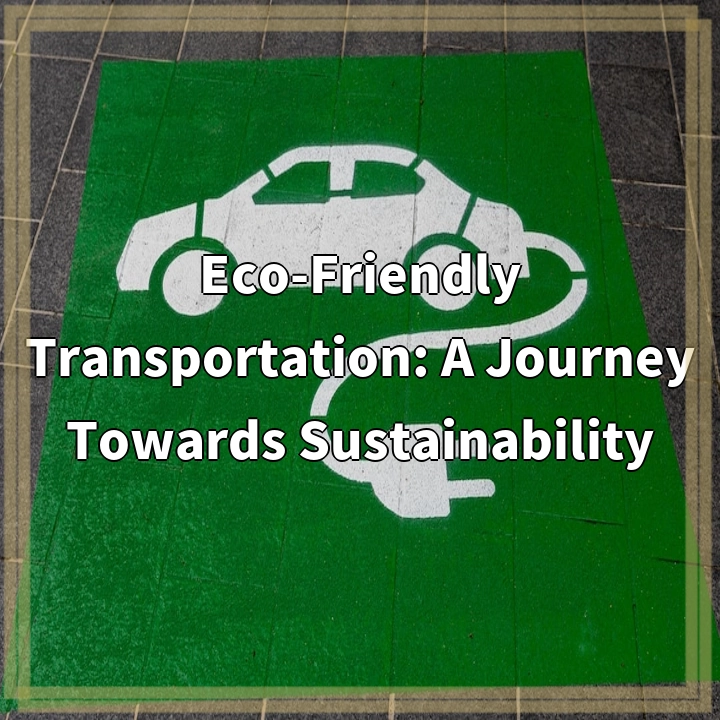
What is Eco-Friendly Transportation?
As concerns about climate change and air pollution continue to grow, the need for eco-friendly transportation alternatives becomes increasingly important. Eco-friendly transportation refers to modes of travel that minimize negative impacts on the environment and promote sustainability. These alternatives aim to reduce greenhouse gas emissions, congestion, noise pollution, and reliance on non-renewable resources.
Real-World Problems Associated with Eco-Friendly Transportation
1. Limited Infrastructure
One of the main challenges faced by eco-friendly transportation is the lack of adequate infrastructure to support alternative modes of travel. Many cities and towns have been designed primarily for cars, with a lack of dedicated bike lanes, walking paths, and public transport systems. This hinders the adoption of eco-friendly transportation options, as individuals may find it difficult or unsafe to switch to these alternatives.
2. High Costs
Eco-friendly transportation options, such as electric vehicles or hybrid cars, can often come with a higher price tag compared to conventional vehicles. This cost barrier can make it challenging for individuals to make the switch, particularly for those with limited financial resources. The high upfront costs of purchasing eco-friendly vehicles or investing in infrastructure upgrades can deter widespread adoption of these alternatives.
3. Limited Range and Charging Infrastructure
Electric vehicles (EVs) offer a promising solution for reducing emissions in the transportation sector. However, limited driving range and inadequate charging infrastructure remain significant challenges. The fear of running out of charge without access to charging stations can discourage potential EV buyers. Expanding the charging network and improving battery technology are crucial for addressing this issue and increasing the viability of electric vehicles.
4. Psychological Barriers
Human behavior and attitudes play a significant role in the adoption of eco-friendly transportation options. Many individuals are resistant to change, and there may be a perception that eco-friendly alternatives are less convenient or less reliable. Overcoming these psychological barriers and fostering a positive mindset towards sustainable transportation can be a challenging but crucial aspect of promoting eco-friendly modes of travel.
5. Lack of Awareness and Education
Another obstacle to widespread adoption of eco-friendly transportation is a lack of awareness about the benefits and availability of alternatives. Many individuals are not fully informed about the environmental impacts of conventional transportation or the range of eco-friendly options available to them. Educational campaigns and initiatives can help raise awareness and inform the public about the importance of sustainable transportation choices.
In summary, eco-friendly transportation offers a path towards a more sustainable future, but it faces several real-world challenges. Limited infrastructure, high costs, limited range and charging infrastructure, psychological barriers, and a lack of awareness and education all need to be addressed to promote widespread adoption of eco-friendly transportation alternatives.

Potential Solutions for Eco-Friendly Transportation
1. Infrastructure Development
Investing in the development of infrastructure that supports eco-friendly transportation is crucial. This includes expanding bike lanes, pedestrian paths, and public transit systems. By creating a safe and convenient environment for alternative modes of travel, individuals are more likely to switch to eco-friendly options.
2. Financial Incentives
Providing financial incentives, such as tax credits or rebates, can help mitigate the higher costs associated with eco-friendly transportation. Governments and organizations can offer incentives for purchasing electric vehicles or installing charging stations, making these options more accessible and affordable.
3. Enhanced Charging Infrastructure
To address the range anxiety associated with electric vehicles, it is essential to improve and expand charging infrastructure. Increasing the number of charging stations and implementing fast-charging technology will help alleviate concerns and enhance the practicality of electric vehicles for longer trips.
4. Behavioral Change Campaigns
Educational campaigns and public awareness initiatives can help overcome psychological barriers by promoting the benefits and convenience of eco-friendly transportation. These campaigns can address misconceptions and highlight the positive impacts of sustainable travel choices, encouraging individuals to embrace and support eco-friendly options.
5. Education and Awareness
Increasing education and awareness around eco-friendly transportation is crucial. Educational institutions, community organizations, and governments can play a role in providing information about the environmental impacts of conventional transportation and the available alternatives. By fostering an understanding of the importance of sustainable travel, individuals are more likely to adopt eco-friendly modes of transportation.
In conclusion, addressing the challenges associated with eco-friendly transportation requires a multi-faceted approach. By investing in infrastructure and providing financial incentives, improving charging infrastructure, promoting behavior change, and increasing education and awareness, we can create an environment that encourages and supports the widespread adoption of sustainable transportation alternatives.















